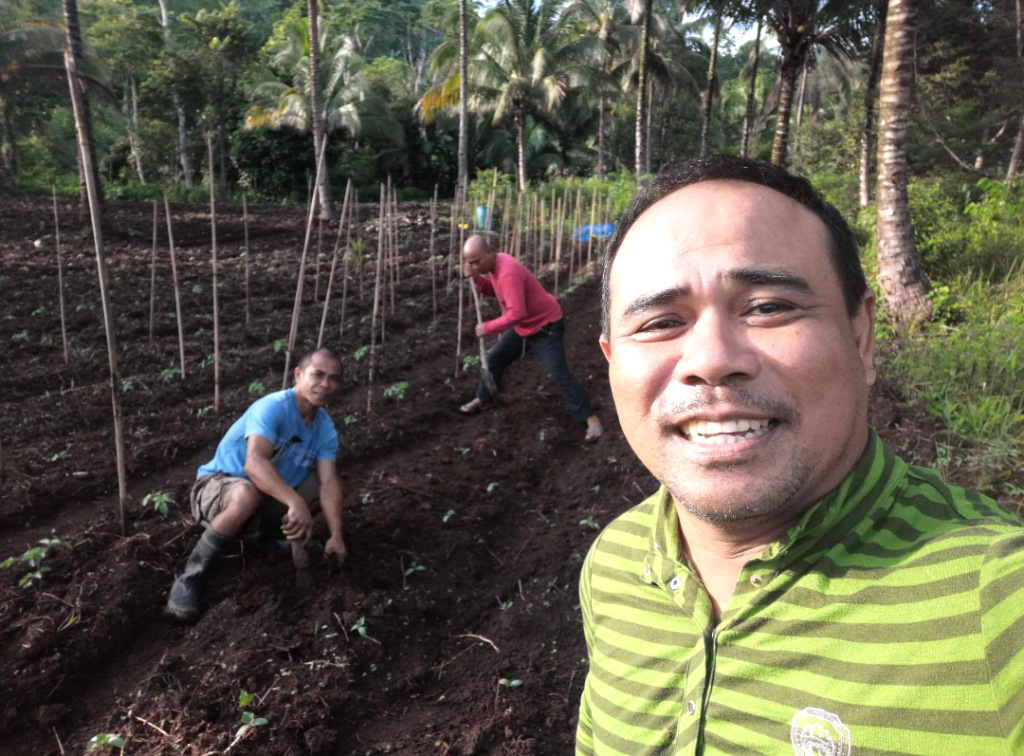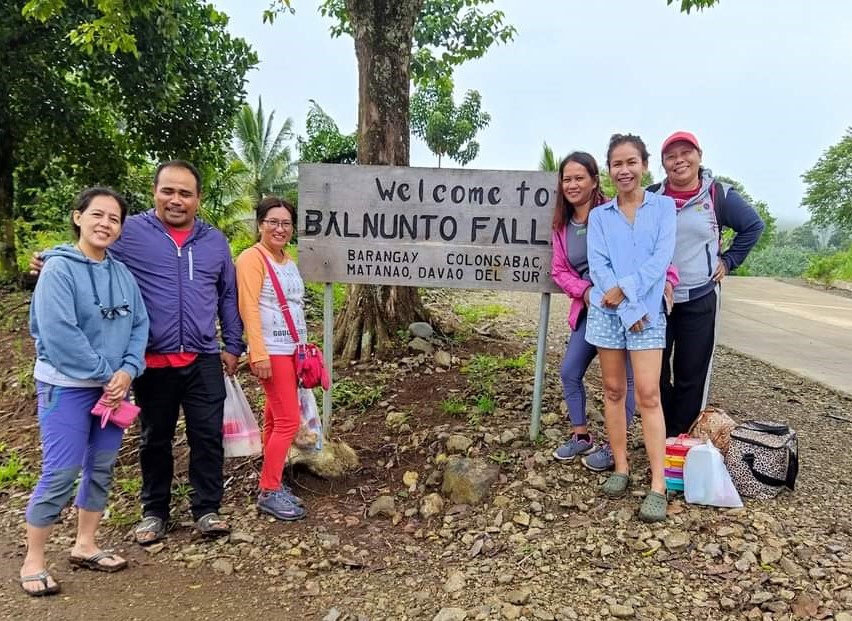Digos City, PH – Rey assists his brother to access knowledge of organic gardening – 31 Jul 2022

Rey, manager of Peaksneng Thormacheat shop remembers his benefactor a priest who once said “you have received grace, skill and talent, everything needs to be shared”. Rey now tells us about his recent visit to Mindanao, PH where he followed his benefactor’s guidance and shared his organic gardening knowledge.
Mindanao is the island where I am from, the place where I was born, the place where my farm is located. I would like to share you my story. I left my beloved Mindanao in 2006. It is the Philippine’s second largest island, and has long been referred to as the “Land of Promise” because of its rich bio-diversity and natural resources. The land holds an incredible wealth from nature, but also has dark moments of truth. Consequently, in the past every traveler who wanted to explore Mindanao would ask about safety, and Mindanao could not hide the truth from them: conflicts associated with religious overtones, clan wars, political dynasties, resentments, corruption and poverty.
There are 18 million people in Mindanao. The majority of the population is non-indigenous, but the population also includes 3.6 million indigenous peoples and they live in a land that is rich with agriculture (banana, pineapple, cacao, coffee and rubber), sea products, minerals (copper and gold) and energy products (natural gas and oil). Yet, more than half of the entire population lived below the poverty line and nearly a third of the population battled with hunger on a daily basis. Well, Mindanao hasn’t fully experienced progress since 2006 for it is has been the land of wars and conflict. It’s problems are rooted in many reasons, one being the long term marginalization of Mindanao from the Philippines national development policy. There has not been a complete guidance made by the national government for Mindanao agriculture because access to land is difficult. Insurgence has also been another reason why poverty and violence dominated the region.
Undeniably, the island is considered as the land of promise. Promise in a sense that it has a lot of natural resources that can be used to make the economy of the Philippines richer. However, it is a land that faces many paradoxes, it really has bountiful resources, yet there has still been hunger and poverty. Mindanao’s sense is peaceful, yet most of the people have been engaged in conflict. Despite the corruption, threats, killings, and poverty that Mindanao people face, they remain strong individuals with hope that their land will fulfill its promise.

It’s been more than decade since I left this place, where I worked as an agri-aid (assistant to an agriculturist). I helped empower the farmers. My projects included water irrigation, soil protection and tree planting. Most of the farmers lived below the poverty line and battled with hunger on a daily basis. In July this year I had the opportunity to visit this place again. I was surprised with the big changes, beautiful road, productive farm, happy and peaceful people, it has improved the lives of the people, and the tourist industry is booming. Finally, our government has helped us build roads, improve agriculture and promote local tourism.

But one thing that I feel is lacking is concern for the environment, this is a worry because overused modern farming techniques can lead to destroying the land’s fertility. Betterlives has been so supportive of the idea of assisting farmers in my place, but a few years ago I was not so keen on the idea. My vacation has given me time to think about the path to sustainable living we have learnt in Cambodia.
So in August 2022, we have started the first garden of cucumber and tomatoes in this place with my brother. Will it prove to be the land of promise? It’s too early to declare. Maybe yes, or maybe not yet!

